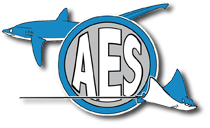
The American Elasmobranch Society, the world’s oldest and largest professional society focusing on the scientific study and management of sharks and their relatives, is now welcoming applications for the Young Professional Recruitment Fund, our new diversity initiative. Awardees will be given one year of Society membership, in addition to specialized professional development training, mentorship, and networking opportunities specific to their needs as international or historically underrepresented minority scientists and professionals.
To be eligible for the Young Professional Recruitment Fund, applicants must fill out the application below and demonstrate that they:

